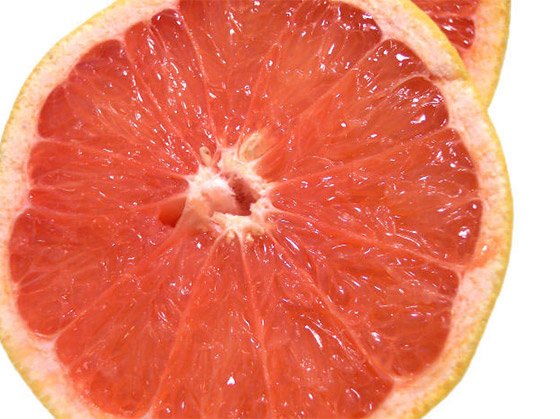1. Blueberries
I just keep hearing so many good things and even new things about these berries. First of all, they are blue, so you know they are loaded with antioxidants just from the skins.
Next they are low in calories and I have read they are anti-inflammatory, reduce blood pressure and are rich in nutrients (Shaughnessy et al., 2009). Not to mention, they taste absolutely great! I get them fresh and frozen. Frozen blueberries have a nice crunch and make a nice addition to cereal, oatmeal or a protein shake.
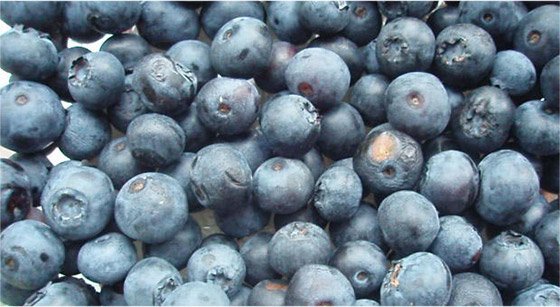
2. Oatmeal
In general, any kind will do (instant, old-fashioned, steel-cut). But technically, I like the old-fashioned oats because they are more coarse and thus will have a lower glycemic index since they are not as small-cut as instant.
Oatmeal is a great source of fiber, in particular, soluble fiber (Sadiq et al., 2008; Welch, 1994). This fiber is great for lowering cholesterol by increasing the elimination of the bad cholesterol (Sadiq et al., 2008; Welch, 1994).
In fact, there was a recent paper that showed a compound in oats called avenanthramides (AVA) has favorable anti-inflammatory and antioxidant potential (Koenig et al., 2009). Granted, this was a supplement with a higher dosage of this compound, however, the compound is still found in oats, and whether it has this benefit from such a small amount in one bowl of oatmeal is besides the point. The bottom line is, it has this compound and this just adds more credence to the benefits of oatmeal.
I have oatmeal almost every morning and it never gets old or boring. Here are a few of my recipes:
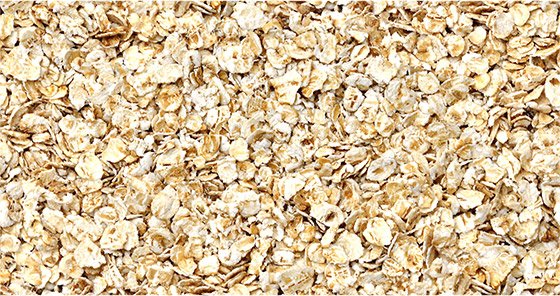
- Old-fashioned rolled oats
- 3/4 cup of boiled water
- blueberries
- almonds
- strawberries
- tamari pumpkin seeds
- 1 tsp psyllium fiber
- 3 tsp wheat bran
- 1 dried prune (chewed into 4-5 pieces)
- dried cherries (rinsed to eliminate excess sugar)
- canned Montmorency cherries.
- Multigrain hot cereal (rye, barley, wheat, oat)
- 3/4 cup of boiled water
- blackberries
- walnuts
- 1/2 banana diced
- 2 tsp of buckwheat honey (darker honey higher in antioxidants)
- cinnamon
- fresh ginger (a small piece minced)
- fresh coconut meat.
 Ivan Blasquez's Oatmeal Recipes PDF (29 KB)
Ivan Blasquez's Oatmeal Recipes PDF (29 KB)
3. Almonds
Too many good things. It is rich in monounsaturated fat, rich in vitamin E and other minerals and a decent source of fiber. Studies have shown the beneficial effect of almonds on lowering cholesterol (Hyson et al., 2002; Kris-Etherton et al., 2009).
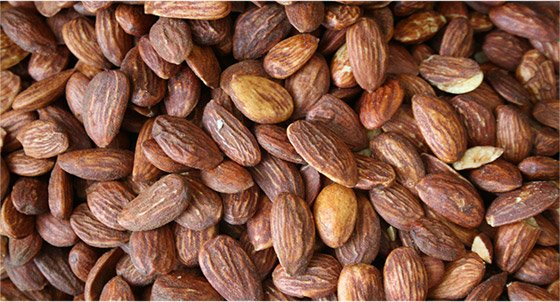
Recent research has even shown almonds can even boost exercise performance and help fight fatigue (Yi et al., 2009). I enjoy almonds in several ways. I like them whole or slivered. I even drink almond milk, which has only 40-45 calories per 8 ounce glass! I add almonds to oatmeal, yogurt, salads, smoothies and I love eating them with grapes!
Here is a fantastic salad with almonds:
- 1-2 cups of organic spinach
- 2 tbsp of organic feta cheese (crumble the cheese in your hand and add)
- 1-2 navel orange wedges (squeeze the juice onto the salad and cut the pulp and add it)
- 2 handfuls of purple grapes
- 2-3 strawberries diced
- 1-2 handfuls of slivered almonds.
 Ivan Blasquez's Strawberry-Almond Bliss Salad PDF (28 KB)
Ivan Blasquez's Strawberry-Almond Bliss Salad PDF (28 KB)
4. Yogurt
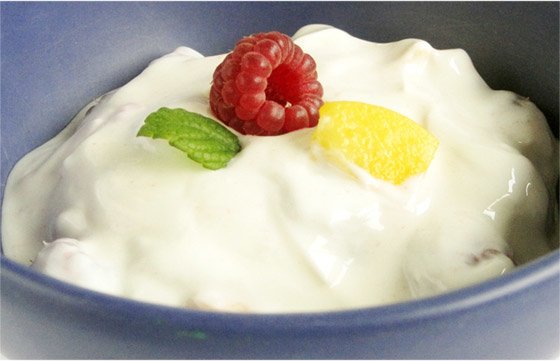
Just a no-brainer as a staple. It can be enjoyed anytime of day and is just fantastic! It is loaded with calcium, protein, vitamin D and good bacteria to aid digestion and even reducing cholesterol (Ataie-Jafari et al., 2009).
Yogurt has also been shown to augment fat-loss and reduce abdominal adiposity (Zemel et al., 2005). Calcium, which is abundantly found in yogurt and dairy foods, has been shown to not only be great for preventing osteoporosis, but reports show it can also accelerate fat-loss (Jawadwala et al., 2009; Zemel et al., 2004).
My favorite yogurts are organic Greek yogurt or any other fat-free organic brand. An easy way to sweeten yogurt to taste is by adding the good sweeteners like molasses, honey or dried fruit.
5. Water
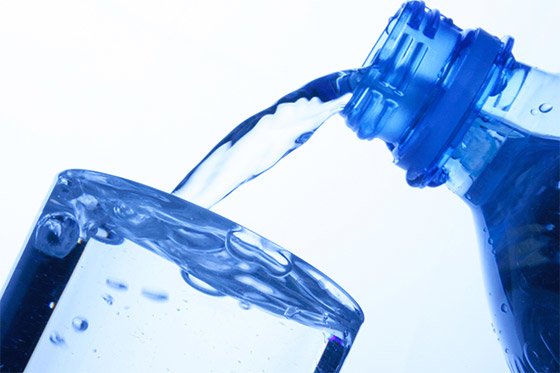
Water satiates, lubricates and accelerates us! Water can boost metabolism (Boschmann et al., 2003). Remember, we are 70% water by bodyweight, so if we keep our aqueous internal environment replenished, this will only speed up and expedite our body's daily functions.
Water also keeps the joints lubricated. So instead of looking for the next hot joint support supplement, why not drink an extra glass of water. So often we take little things like drinking water for granted. Water can also satiate us. Water has a strong effect on creating expansion or distention of the stomach (Geliebter et al., 1988).
So next time you eat a meal and are upset that you are still hungry because you are working so hard towards a weight-loss goal, drink a glass of water. Better yet, drink 4 glasses of water and wait 10-minutes. You could also eat a high-water food such as watermelon or soup and these will also satiate due to their high-water content (Rolls et al., 1999). 9 out of 10 times, you will not be hungry afterwards!
6. Grapefruit
Fresh grapefruit or even the juice are fine. Why do you think there is a grapefruit diet? Apparently this fruit has done something right! Grapefruit is the size of a cabbage ball, yet on 40 calories for the entire thing!
It is one of the, if not the lowest calorie fruit, ounce for ounce. It is rich in vitamin C being a citrus fruit. Grapefruit has also been shown to aid in fat-loss and reduce insulin resistance (Fujioka et al., 2006).
Grapefruit also has natural testosterone-stimulating effects (Dib et al., 2009). It also is a good source of beta-hydroxy-beta-methylbutyrate (HMB) (Wilson et al., 2008). Also, it is very satiating and filling being filled with water and having a bitter sweet taste to satisfy any sugar-craving.
Weight-Loss Real-World Application: No matter how bad your sugar craving is at night, eat 1-2 slices of grapefruit then re-evaluate. Again, this will dampen the severity of the craving and you will likely make a healthier choice or eat less of what you originally craved. Best case scenario though, you eat the entire grapefruit!
Remember, this is only 40-calories! Seems like a lot of sweet sugar, but this is why fruit has been called "Nature's candy." Fruit never made anyone fat and even if it did, that would be the world's healthiest fat person.
7. Eggs
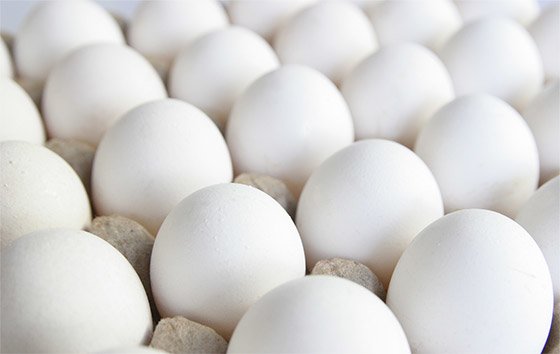
Yolks or not, this food also has too many good things to not include in the diet. One egg has 6 grams of protein and they contain many positive minerals and vitamins.
There have been reports illustrating how eggs are a staple in the successful long-term success of people who lost weight (Vander Wal et al., 2008). Here's why --> First, eggs are satiating due to the protein content. Protein has an effect on the hormone ghrelin, which is involved in influencing appetite regulation. Too keep things simple, protein will satiate one longer.
I eat organic eggs for various reasons. First of all, grass-fed hens will produce healthier lipid profiles in the eggs they lay. Sometimes we need to think about what we eat.
In other words, you are what you eat, literally. I mean, think of the lifestyle of the food you are eating. For instance, eating pork means you are eating from a sedentary lazy animal that has a high body fat composition. On the contrary, eating fish and chicken means you are eating from lean and active animals.
Eating plant foods are very low in fat and loaded with nutrients. The yolk of an organic egg actually has less cholesterol than conventional eggs.
If I recall, the daily cholesterol value of one conventional egg is 71%, whereas with an organic egg it is only 57%. Plus, organic egg yolks also contain 40% iodine and host other things like riboflavin, zinc, etc. If you recall, iodine is important in thyroid function, particular the metabolism boosting hormones!
Here are some of my favorite egg creations:
- 2-3 organic egg whites
- 1 organic yolk (optional)
- chives
- salt substitute
- black pepper.
Shallow fried in pan with either extra virgin olive oil or virgin coconut oil.
- 2-3 organic egg whites
- 1 organic yolk scrambled
- organic American cheese
- green, yellow, orange or red bell pepper ( I switch it up every other week).
- Shallow fried in pan with either extra virgin olive oil or virgin coconut oil<.
I sometimes add the bell pepper to the egg omelette cold, since bell peppers are a rich source of vitamin C and vitamin C is heat-sensitive.
 Ivan Blasquez's Egg Creations PDF (27 KB)
Ivan Blasquez's Egg Creations PDF (27 KB)
8. Pineapple
Bromelain is what I'm talking about! This is a powerful anti-inflammatory substance and pineapple is rich in it (Chobotova et al., 2009)! Pineapple is also rich in vitamin C and has just a fabulous taste. I sometimes like to make a great tropical fruit salad with it.
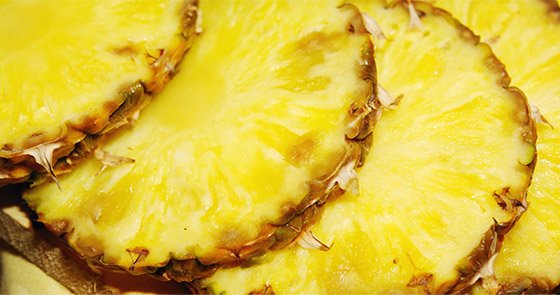
- Diced pineapple
- grapes
- strawberries
- blueberries
- almonds
- 1 tsp molasses
- coconut meat
- cinnamon
- 1/4 cup of kefir
- 1/4 cup of soymilk.
 Ivan Blasquez's Tropical Breeze Fruit Salad PDF (26 KB)
Ivan Blasquez's Tropical Breeze Fruit Salad PDF (26 KB)
9. Montmorency Or Red Tart Cherries
These are the same cherries used in cherry pie. Too bad, because they can be eaten really with anything. I went to the American College of Sports Medicine Annual Science meeting in Seattle this year (2009) and sat in on several presentations of published papers documenting the benefits of red tart cherry juice (Jones et al., 2009; Kuehl et al., 2009).
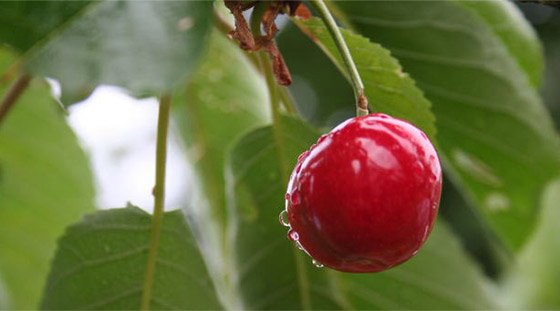
The benefits came from the anthocyanins in the cherries (Keuhl et al., 2009). They promote reduced inflammation and they seem to be protective against DOMS (delayed onset muscle soreness) (Kuehl et al., 2009).
I've been eating them ever since and can attest to there benefits. I seem to recover faster and feel less stiffness in the mornings. They can easily be found in most grocery stores in the canned fruit aisle. I get the brand that has no added sugar, so essentially, I'm eating the cherries themselves and drinking the leftover juice! I actually had a recent breakthrough in a little drink concoction I made and it tasted so good!
- 1/4 cup of Montmorency cherry juice from the can
- 1/4 cup of pomegranate juice
- glucosamine sulfate powder
I do not know why, but this just tasted so good when I drank it. Glucosamine sulfate is kind of bitter and has a funny taste, but drinking it with this made it taste really good. Actually, the glucosamine actually added a unique taste to the fruit juices together!
 Ivan Blasquez's Joint Support Concoction PDF (12 KB)
Ivan Blasquez's Joint Support Concoction PDF (12 KB)
10. Tamari Pumpkin Seeds
I'm not a registered dietician, but I know what are the healthier foods in terms of caloric quantity, carb quality, fat quality, vitamin/mineral quality and naturalness of the food. It would take too long to get into this, but I will gently delve into this a little.
Caloric quantity is the caloric density based on taking the calories per serving and dividing that by the grams per serving. This is based off the book, "Volumetrics," by Barbara Rolls.
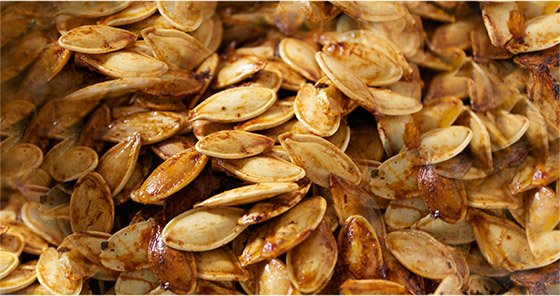
Anything under a 2.5 is considered a lower caloric density food I believe. Carb quality comes from looking at total carbs, seeing how many are from sugars (sometimes one will not know how much is added vs. naturally in the food), fiber content, and sugar in the ingredients and where it falls in terms of numerical order in the ingredient list.
Anyhow, tamari pumpkin seeds are incredibly amazing and by far, the best seeds out there for bodybuilders in particular (I'll explain later) and really for anyone! Let me explain this now: This is the caloric composition per serving:
- Fat: 6 g
- Fiber: 11 g
- Protein: 18 g
Do you see anything wrong with this picture?! Most nuts and seeds have a fat to protein ratio of about 2 or 3 to 1. For example, a serving of peanut butter would be 15-18 grams fat, 6-8 grams protein depending on the brand. This goes for most nuts in general. However, these tamari pumpkin seeds have the complete opposite dietary composition! So basically, you are getting a super high protein seed, low in fat, but high in the good fat and high in fiber!
Conclusion
All in all, these 10 foods are a staple in my daily nutrition. All 10 of these foods are natural foods with minimal to no processing and are un-refined. Just the way I like my food and as close to nature as nature intended.
References
- Ataie-Jafari et al. (2009). Cholesterol-lowering effect of probiotic yogurt in comparison with ordinary yogurt in mildly to moderately hypercholesterolemic subjects, Annals of Nutrition and Metabolism, 54(1), 22-27.
- Boschmann et al. (2003). Water-induced thermogenesis, The Journal of Clinical Endocrinology and Metabolism, 88(12), 6015-6019.
- Chobotova et al. (2009). Bromelain's activity and potential as an anti-cancer agent: Current evidence and perspectives, Cancer Letters, (in-press).
- Dib et al. (2009). The ergogenic and clinical effects of a nutritional supplement, Mass Fx in resistance trained adult males, Medicine and Science in Sports and Exercise, 41(5), S395.
- Fujioka et al. (2006). The effects of grapefruit on weight and insulin resistance: Relationship to the metabolic syndrome, Journal of Medicinal Food, 9(1), 49-54.
- Geliebter et al. (1988). Gastric distention by balloon and test-meal intake in obese and lean subjects, The American Journal of Clinical Nutrition, 48(3), 592-594.
- Hyson et al. (2002). Almonds and almond oil have similar effects on plasma lipids and LDL oxidation in healthy men and women, The Journal of Nutrition, 132(4), 703-707.
- Jawadwala et al. (2009). Effect of calcium supplementation on body composition and total energy expenditure during sub maximal exercise, Medicine and Science in Sports and Exercise, 41(5), S403.
- Jones et al. (2009). Tart cherry juice for fibromyalgia: New testing paradigm and subgroup benefits, Medicine and Science in Sports and Exercise, 41(5), 100.
- Koenig et al. (2009). Effect of avenanthramide supplementation on responses to eccentric exercise in young women, Medicine and Science in Sports and Exercise, 41(5), S366.
- Kris-Etherton et al. (2009). Almonds lower LDL cholesterol, Journal of the American Dietetic Association, 109(9), 1521-1522.
- Kuehl et al. (2009). Efficacy of tart cherry juice in reducing muscle pain after strenuous exercise, Medicine and Science in Sports and Exercise, 41(5), 99-100.
- Sadiq et al. (2008). Oat: Unique among the cereals, European Journal of Nutrition, 47(2), 68-79.
- Shaughnessy et al. (2009). Diets containing blueberry extract lower blood pressure in spontaneously hypertensive stroke-prone rats, Nutrition Research, 29(2), 130-138.
- Rolls et al. (1999). Water incorporated into a food but not served with a food decreases energy intake in lean women, The American Journal of Clinical Nutrition, 70(4), 448-455.
- Vander Wal et al. (2008). Egg breakfast enhances weight-loss, International Journal of Obesity, 32(10), 1545-1551.
- Welch, R.W. (1994). Can dietary oats promote health? British Journal of Biomedical Science, 51(3), 260-270.
- Wilson et al. (2008). Effects of beta-hydroxy-beta-methylbutyrate (HMB) on exercise performance and body composition across varying levels of age, sex, and training experience: A review, Nutrition & Metabolism, 5, 1.
- Yi et al. (2009). Almond intake enhances resistance against fatigue in elite chinese endurance athletes, Medicine and Science in Sports and Exercise, 41(5), S367.
- Zemel et al. (2004). Calcium and dairy acceleration of weight and fat loss during energy restriction in obese adults, Obesity Research, 12(4), 582-590.
- Zemel et al. (2005). Dairy augmentation of total and central fat loss in obese subjects, International Journal of Obesity, 29(4), 391-397.

